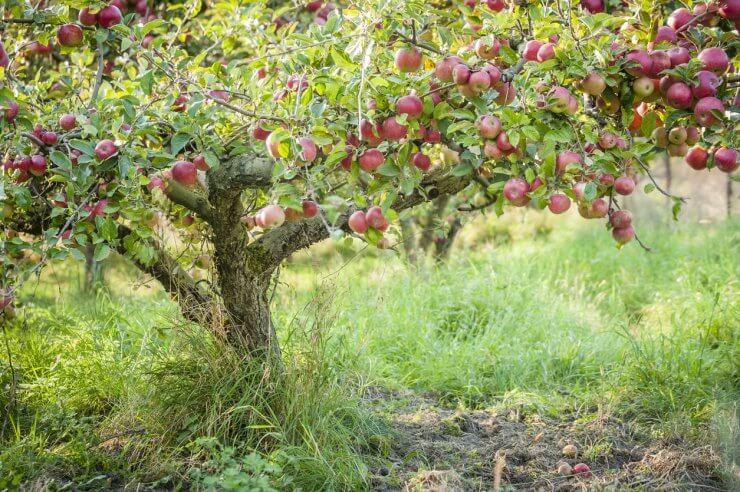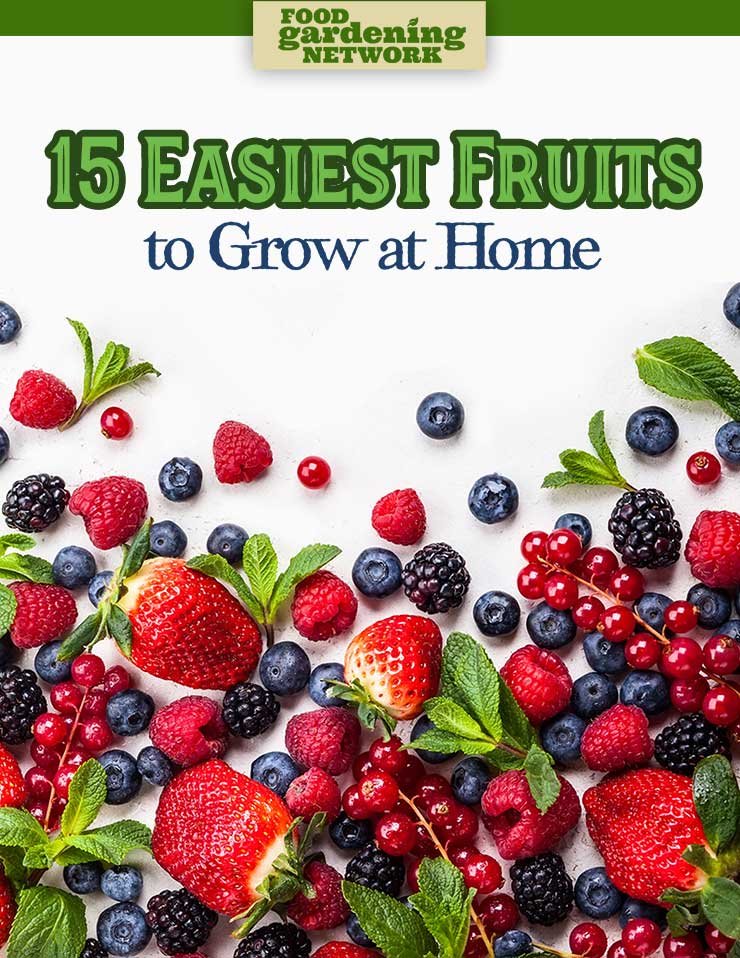
As much as I love vegetable gardening, there’s something truly magical about having a few fruit trees in your yard. A fresh apple or peach or cherry straight from the tree is simply unbeatable. Like all plants, though, fruit trees need certain nutrients to thrive, and over time, they can deplete the soil of these nutrients. That’s why fertilizing fruit trees is a sometimes important part of taking care of your vegetation.
Why sometimes? The problem with fertilizing fruit trees is that there are so many different opinions on when and how to do it. Even then, soil in New England tends to be short on magnesium and potassium, while in western Oregon, soil may often have excess magnesium. That’s a generalization, of course.
The point here is that the only way to say with certainty what your soil needs is to get it tested. Outside of that, there are still a lot of general tips that work in keeping your fruit trees healthy.
Explore the easiest fruit to grow at home—indoors or out! Read our FREEBIE 15 Easiest Fruits to Grow at Home, right now!
Your beginner’s guide to fertilizing fruit trees
Despite the differing opinions on a few details, there is still a lot of agreement on many of the best methods for fertilizing fruit trees, if you’re going to fertilize.
Use good fertilizer. If you do need to supplement poor soil with fertilizer, stick to organic fertilizer mixed in with compost and mulch.
Fertilize in the spring. One thing that everyone agrees on is that the best time to fertilize trees is in spring, right before buds begin to emerge. This is when trees need energy to grow and produce fruit.
Don’t over fertilize. Too much fertilizer will harm your trees. Specifically, excess nitrogen can burn young roots and leave trees susceptible to disease. In fact, a number of experts recommend skipping fertilizer altogether when you first plant fruit trees.
Maintain soil moisture. Instead, encourage healthy root growth by maintaining soil moisture.
Several sources, including Iowa State University’s Department of Horticulture and the University of Maine, point out that fruit trees can get most of their required nutrients from the soil without additional fertilization.
That’s not to say that your fruit trees won’t ever need a little boost. There’s nothing wrong with adding a little fertilizer to your soil. Just follow the instructions on the packaging, and don’t overdo it.
As long as you are taking care that your fruit trees get plenty of water and attentive, careful pruning, you may only need to fertilize them minimally.
What has your experience been with growing fruit trees? Have you found it necessary to fertilize them? Leave your story in the comments below.
Explore the easiest fruit to grow at home—indoors or out! Read our FREEBIE 15 Easiest Fruits to Grow at Home, right now!





This FREEBIE is a fantastic resource for anyone looking to start their own fruit garden! The guide on the “15 Easiest Fruits to Grow at Home” is perfect for beginners and experienced gardeners alike. It offers great insights into fruits that require minimal care, making it easy to enjoy fresh, homegrown produce. Can’t wait to get planting! ????????????
When I clean out the chicken coop, I spread the hay around the base of the fruit trees. These trees are probably 20 years old and bear enormous amounts of fruit. The goat droppings and hay from their barn got spread around the raspberry canes this winter. We get beautiful fruit here, but have animals that help make that happen.
thank you these are great advises Idid have a fruit tree that did just that
thank you these are great advises
I use JOBE’S Fruit fertilizer in the spring. The peach & pear trees have been doing well.
Hello
From Wisconsin. Is cow manure a good fertilizer to put around/under established apple trees topped with a thin mulch covering??
Thanks for your help and a great helpful sight. ????????????????????????????????????????????
Not if it is fresh. It must be aged. To do that mix it with some shredded newspaper or pine shavings — my be easier to get from Tractor Supply — and then put it somewhere where 40 days of sunshine and rain can let it leach. Then it will be fine. If you aren’t getting rain, spray it with the hose. Works for me and chicken manure all over the place.
We live in central Florida, We have many fruit trees of many varieties. the problem with Florida homes today is the fill dirt used to build up the property prior to building the house. The problem with planting anything is getting below the fill dirt as it is often high clay content. Sometimes the fill dirt is taken from the beach side and has a high concentration of salt which dissipates over time. So, with that being said it depends on the location of the planting. My pomegranate tree is the biggest problem. I get an abundance of blossoms but also a lot of bud drop.
Soil samples are a great idea but how do I know what the tree needs below the fill dirt depth? the Mulberry trees, loquat and fruit trees don’t seem to mind. The trees that are away from the house do well like the Sea Grape more Loquat. I have given up with the mango tree. With a variety of fruit trees can I use the same fertilizer on each of go by soil samples for each location?
I’d love to see pics of with some of these replies.
Is there a way to post pics?
Help! We hace a wonderful peach tree that blooms like crazy but the fruit never grows past the size of a ping pong ball! We’ve watered and fertilized and thinned the bud, but nope, all we get are a lot of hard nubbins. Is it too short a growing season? (Carol, Berkshire county, MA).
Howdy neighbor, I’m in Western MA also! The probable culprits are improper watering and excess or lack of nutrients. My suggestion is trying to thin the fruit in the month just after the blossoms drop. Sometimes peach trees can’t provide enough nutrients to all the fruit they produce. Also, over-fertilizing can lead to abundant plant growth but stunted fruit. I hope that helps!